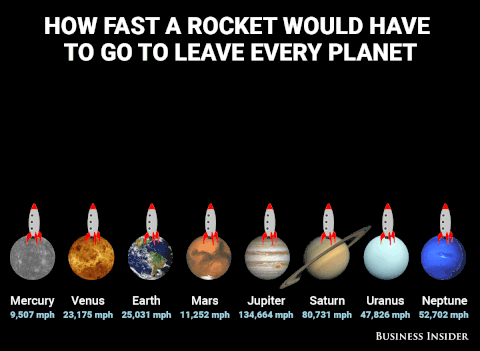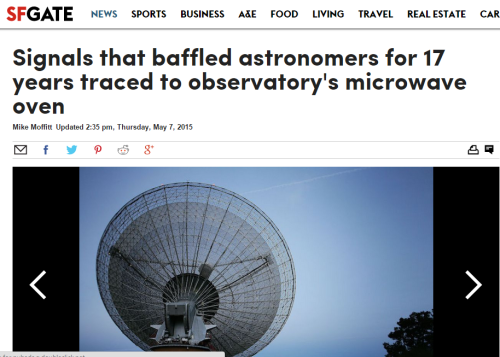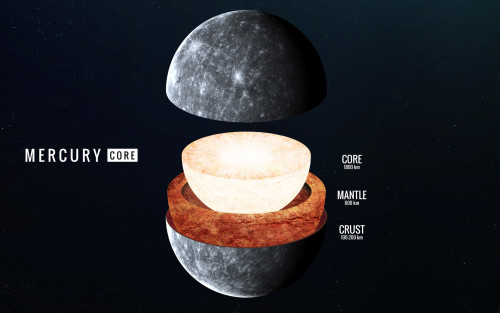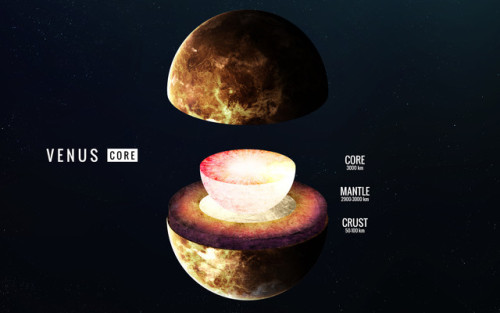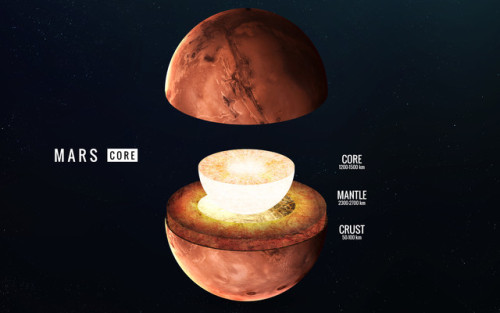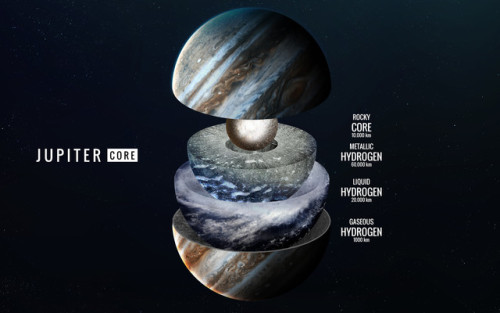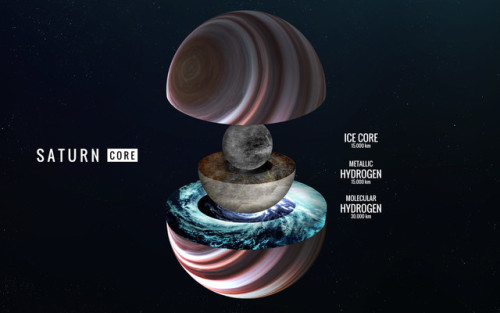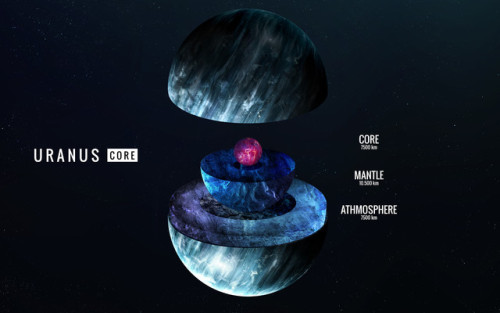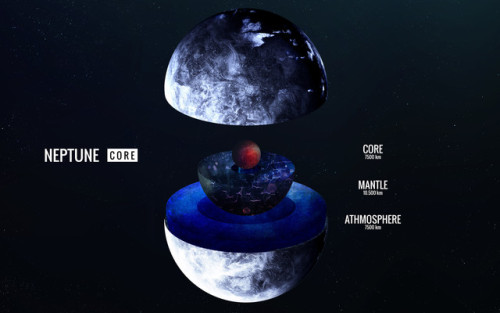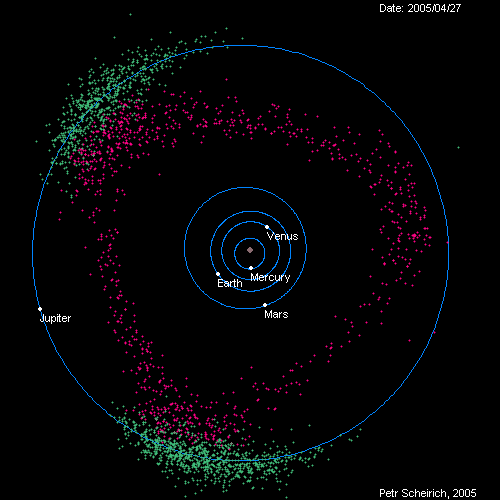A podcast project to fill the space in my heart and my time that used to be filled with academic research. In 2018, that space gets filled with... MORE SPACE! Cheerfully researched, painstakingly edited, informal as hell, definitely worth everyone's time.
243 posts
Latest Posts by fillthevoid-with-space - Page 4

Earth is a super special world. It has life on it, and getting conditions just right so that life will survive is an incredibly difficult task. Other planets and other moons in our solar system may look like they could have life on them, but it just didn’t happen.
Life on other planets is for a different episode, though. In this one, I’m talking about what we can see on our close neighbors, the eight (maybe seven?) planets in our solar system. Learn how they were discovered, what naming conventions we use for them and their moons, how to differentiate between them, and what probes we’ve sent out to learn more about them. Also enjoy snippets from the lovely orchestral suite written for each planet by Gustav Holst! It’s the longest episode so far but I promise it’s worth it.
There’s a timeline below the cut in addition to the other resources because hooboy did I mention a lot of people. I may also put together a timeline of probes... But that’s for another podcast. Maybe the next podcast! Let me know what you think I should research by messaging me here, tweeting at me at @HDandtheVoid, or asking me to my face if you know me in real life. And please check out the podcast on iTunes, rate it or review it if you’d like, subscribe, and maybe tell your friends about it if you think they’d like to listen! Also below the cut are my sources, music credits, vocab list, and the transcript. I mention a book, a play, a poem, and a few works of art, and I quote an astronomy book in this episode so if you want to see that written down, those sources are there as well.
(My thoughts for the next episode were spectroscopy, auroras, or probes through the ages. Let me know by the 21st and I’ll have the next podcast up by July 31!)
Glossary:
auroras - a light display that occurs when a magnetosphere is sufficiently disturbed by solar wind that charged particles scatter into the upper atmosphere and lose their energy.
magnetosphere - an invisible barrier that surrounds a celestial objet. It is often generated by the movement of the liquid metal core of the object. Around a planet, it deflects high-energy, charged particles called cosmic rays that can either come from the Sun or, less often, from interstellar space.
prograde - when a planet spins from east to west.
retrograde - when a planet spins from west to east.
sol - a unit of time measuring one Martian day, or 24 Earth-hours and 40 Earth-minutes. The immediately previous Martian day is called yestersol.
transit of Mercury/Venus - when a planet passes in front of the Sun.
Script/Transcript
Timeline of people mentioned
Nicolaus Copernicus, Polish (1473-1543)
Tycho Brahe, Danish (1541-1601)
Galileo Galilei, Italian (1564-1642)
Johannes Kepler, German (1571-1630)
Simon Marius, German (1573-1625)
Pierre Gassendi, French (1592-1655)
Giovanni Cassini (also known as Jean-Dominique Cassini), Italian/French (1625-1712)
Christiaan Huygens, Dutch (1629-1695)
William Herschel, German/English (1738-1822)
Johann Elert Bode, German (1747-1826)
Caroline Herschel, German/English (1750-1848)
Johann Franz Encke, German (1791-1865)
John Herschel, English (1792-1871)
William Lassell, English (1799-1880)
Urbain Le Verrier, French (1811-1877)
Johann Galle, German (1812-1910)
John Couch Adams, English (1819-1892)
Edouard Roche, French (1820-1883)
Heinrich Louis d’Arrest, German (1822-1875)
Asaph Hall III, American (1829-1907)
James Clark Maxwell, Scottish (1831-1879)
Giovanni Schiaparelli, Italian (1835-1910)
Percival Lowell, American (1855-1916)
Eugène Antoniadi (also known as Eugenios Antoniadis), Greek (1870-1944)
Gerard Kuiper, Dutch/American (1905-1973)
Clyde Tombaugh (1906-1997)
Sources:
Who discovered each planet via Cornell University
The mathematical discovery of Neptune and Pluto via University of St. Andrews, where my mom’s boyfriend’s son graduated last year! Mad props, Henry!
Holst’s The Planets via the Utah Symphony
More on Holst’s suite, including music files
Chronology of solar system discovery
MESSENGER information via John Hopkins University Applied Physics Laboratory
Auroras via NASA’s Themis mission
Magnetospheres via NASA, which has a tumblr! You should follow it! Good stuff.
Curiosity rover via NASA
‘Canali on Mars’ debacle via NASA
Mariner 9 via NASA
Origin of ‘yestersol’ and Martian day-length via A Way With Words
Richard Bram: “Superlatives are inadequate; words fail. Look. Think. Be in awe.”
Images of Mars through the years via The Telegraph
Mars-One mission to colonize Mars
Names of all the planet’s moons and their significance in mythology, last updated in 2013 and questionably reliable but from what I know of mythology—and I do know more than most—it’s not too far off.
Table of moons of various planets
Jupiter via NASA
Jupiter moon name facts via NASA
The Galilean Moons of Jupiter via University of Colorado at Boulder
Saturn’s moons via Phys.org
Cassini mission website
Saturn overview via NASA
Saturn’s moon Titan via NASA
Ethane via PubChem
Methane via EPA
Neptune’s moons via Space.com
What is Pluto via NASA
Pluto Overview via NASA
“Dwarf planets may provide the best evidence about the origins of our solar system.”
New Horizons mission via NASA
Pluto and our designations for planets are mentioned very briefly in this Oatmeal comic. I liked it.
Sobel, Dava. The Planets. Viking: NY, 2005.
“But tides raised by the Sun in the planet’s molten middle gradually damped Mercury’s rotation down to its present slow gait” (34).
“Light and heat always hit Mercury dead on, while the north and south poles, which receive no direct sunlight, remain relatively frigid at all times” (35).
“Venusian clouds comprise large and small droplets of real vitriol—sulfuric acid along with caustic compounds of chlorine and fluorine. They precipitate a constant acid rain, called virga, that evaporates in Venus’ hot, arid air before it has a chance to strike the ground” (61).
“…Neptune, where the voices of a female choir, sequestered in a room offstage, are made to fade out at the finale (with no sacrifice in pitch) by the slow, silent closing of a door” (165).
Holst: “Saturn brings not only physical decay but also a vision of fulfillment” (165).
“They occupy a nearby region of perpetual fragmentation known as the Roche zone, named for the nineteenth-century French astronomer Edouard Roche, who formulated the safe distances for planetary satellites” (172).
“It's near twin, Neptune, reveals a more complex beauty in subtle stripes and spots of royal to navy blue, azure, turquoise, and aquamarine” (200).
“This outlying population offered Pluto a new identity—if not the last planet, then the first citizen of a distant teeming shore” (214).
Van Gogh, Vincent. Starry Night (June 1889).
—. Road with Cypress and Star (May 1890).
—. White House at Night (June 1890).
Shakespeare, William. A Midsummer Night’s Dream (1605).
Pope, Alexander. “The Rape of the Lock” (1712). (It’s a mock-epic satiric poem about stealing a lock of hair, not physical rape)
Duane, Diane. Wizards at War. Harcourt Trade Publishers: San Diego CA, 2005.
Intro Music: ‘Better Times Will Come’ by No Luck Club off their album Prosperity
Filler Music: The Planets (1918) by Gustav Holst, performed by the London Symphony Orchestra in 2003.
Outro Music: ‘Fields of Russia’ by Mutefish off their album On Draught

July 16th, 1969, 8:32 AM - Neil Armstrong, Michael Collins, and Edwin “Buzz” Aldrin Jr. lift off aboard Saturn V SA-506.

Light Echoes Used to Study Protoplanetary Disks : This illustration shows a star surrounded by a protoplanetary disk. A new study uses data from NASAs Spitzer Space Telescope and four ground-based telescopes to determine the distance from a star to the inner rim of its surrounding protoplanetary disk. Researchers used a method called photo-reverberation, also known as light echoes.
js

Observing stars is all well and good, but how can I use stars to make my life easier? With a few handy tools and a lot of complicated math and careful table scouting, of course! Okay, it’s not actually any easier to tell where you are, predict when the Sun will rise or where the star Rigel will be at 11:36pm EST, or guess when the next eclipse will be using these tools, but if you don’t have a computer handy maybe it will help.
I did my best to describe all these odd devices in the clearest terms I could but you can hit me up with questions if you have them! Definitely check out some of the video links if you can’t quite picture what I said. I’m also on Twitter at @HDandtheVoid if you’d rather ask me there. And please check out the podcast on iTunes, rate it or review it if you’d like, and subscribe! I’ll always post all the extras here on Tumblr but iTunes is probably more convenient for downloading.
Below the cut are my sources, music credits, vocab list, and the transcript. I mention a play and a story/book and quote an astronomy book in this episode so if you want to see that written down, those sources are there as well. Let me know what you think of this episode, let me know what you think I should research next*, tell me a fun space fact… anything’s helpful!
*(My thoughts were planets, spectroscopy, or Edmond Halley. Let me know by the 6th and I’ll have the next podcast up by July 17th!)
Glossary:
armillary sphere - a device showing the apparent daily motion of the Sun depending on the season, the date, and the latitude of observation. See example video in the link.
Antikythera Mechanism - a device used to establish a calendar based on the Metonic Cycle; eclipse prediction; the location of planets, the Sun, and the Moon on a particular day; and determine the phase of the Moon on a particular day. See example video in the link.
astrolabe - a device for measuring the altitudes of certain celestial objects and for calculating latitude before the development of the sextant. One side is indented, the space called the mater, and can hold a plate depicting the local latitude. Over this plate is a rete, which points out different fixed stars as well as the Sun’s ecliptic, divided into 30 degree sections representing the zodiac signs. On top of the rete was a clock-like hand that stretched the diameter of the astrolabe, called the rule. The rule and rete could be rotated over the face of the plate. See example in the link.
azimuth - a section of the horizon measured between a fixed point and the vertical circle passing through the center of an object. See example in the link.
declination - the angle of the Sun relative to the equator. The Sun’s angle changes with the seasons.
ecliptic - the path of the Sun over the course of a year.
exeligmos cycle - a cycle that is 3 times the saros cycle, or 669 months. It is more accurate means of predicting eclipses and additionally predicts eclipses that will be visible from a location close to the initial eclipse.
kamal - an Arabic navigation tool consisting of a knotted string and a piece of wood. A navigator would tie a knot in the string and, by holding it in their teeth, sight the North Star along the top of the wooden piece and the horizon along the bottom. To return home, the navigator would sail north or south to bring Polaris to the altitude they had observed in their home port, then turn left or right and sail down the latitude, keeping Polaris at a constant angle. Over time, Arab navigators started tying knots at regular intervals of a fingerwidth, called an issbah, that’s about 1 degree and 36 minutes.
metonic cycle - a 19-year cycle developed by the Babylonians to sync their lunar months with the solar year. In the Metonic cycle, there would be 12 years that lasted 12 lunar months and 7 years that lasted 13 months.
saros cycle - a cycle of 223 months that is used to predict eclipses.
sextant - a device used to determine an observer’s location based on the observation of a known celestial object and a lot of calculation. It is still in use by sailors.
stereographic projection - a process for depicting a spherical, 3-dimensional object on a flat surface. An imaginary line is drawn from one point on the object to a point on the flat surface, following an angle to achieve the same relationship between each point on the object. See example in the link
Script/Transcript
Sources:
Video of how to use an armillary sphere
History of the armillary sphere via University of Cambridge
Video lecture on using an armillary sphere. It sounds like he’s trying to sell it.
Video of how to use an astrolabe
Make your own astrolabe suggestions via In the Sky.org
An old guy kept up a website on astrolabes but he died in April 2016, it’s very sad. Excellent info though.
Explanation of unequal hours
Pullman Car Hiawatha summary, just to prove it’s a real play
Chaucer’s Canterbury Tales with its brief astrolabe mention
Video on how to use a sextant
The many uses of a sextant via Classic Sailing
Why a sextant works via Trailnotes
The history of the sextant
The definition of azimuth
The definition of declination
Video of Antikythera Mechanism’s virtual model based on a theoretical and mechanical model. Just a theoretical model!
Antikythera Mechanism via Smithsonian Magazine
The Antikythera Mechanism Research Project website
Antikythera Mechanism via The New Yorker
Saros cycle via NASA
Saros and Exeligmos cycles
Crouper, Heather and Nigel Henbest. The History of Astronomy. Firefly Books: Buffalo, NY, 2007.
“The circular gear wheels of the Antikythera Mechanism reflect the ancient Greeks’ preoccupation with circles—and with the idea that everything in the sky moves around in circular paths, because the heavens are the home of perfection, and a circle is the ideal shape.” (59)
Intro Music: ‘Better Times Will Come’ by No Luck Club off their album Prosperity
Filler Music: ‘Brooklyn Nights Guitar’ loop from Garageband
Outro Music: ‘Fields of Russia’ by Mutefish off their album On Draught


This is a Trichroic Beam Splitter.
Using this splitter a white beam of light can be separated into three colours. Red, Blue and Green.
Source

We will not leave the crew hanging!
The crew module uprighting system rotates Orion should it come to rest upside down when landing in the water.

After over a century of observations and several theories, scientists may have finally nailed the origin of the high-speed plasma blasting through the Sun’s atmosphere several times a day. Using a state-of-the-art computer simulation, researchers have developed a detailed model of these plasma jets, called spicules.
The new findings answer some of the bigger questions in solar physics, including how these plasma jets form and why the Sun’s outer atmosphere is far hotter than the surface.
“This is the first model that has been able to reproduce all the features observed in spicules,” Juan Martinez-Sykora, lead author and astrophysicist at the Bay Area Environmental Research Institute in California, told ScienceAlert.
Continue Reading.

Did you know that when we classify stars, we’re comparing different types of stars but also stars at different stages of their life cycles? This is the second in a two-part episode about star classifications (go listen to Part 1 if you haven’t already; or listen to this one first and then listen to Part 1, it’s not exactly spoiler territory here). In this podcast, I talk about the various ways we've chosen to interpret observational data on stars, from observing the bright sky-dots to evaluating how bright they are by comparing them to each other, and all the new things we can do with new observational techniques. Never fear, Harvard observatory’s computers make a significant appearance again in this one!
I did my best to explain everything in as comprehensible terms as possible but you can hit me up with questions if you have them! I’m also on Twitter at @HDandtheVoid if you’d rather ask me there. And go ahead and check out the podcast on iTunes, rate it or review it if you’d like, and subscribe! I’ll always post all the extras here on tumblr but iTunes is probably more convenient for downloading.
Below the cut are my sources, music credits (thanks Elena for the filler music suggestion, very on-the-nose), vocab list, and the transcript. I mention a couple of books and quote a couple people in this episode so if you want to see that written down, those sources are there as well. Let me know what you think of this episode, let me know what you think I should research next*, tell me a fun space fact… anything’s helpful!
*(My thoughts were planets or looking into a couple major astronomers; either Edmond Halley or Tycho Brahe <3 or maybeStephen Hawking? Let me know by the 23rd so I can get a podcast up by July 3rd!)
Glossary:
Charge-Coupled Device (CCD) - a device that moves an electrical charge to shift the signal between incoming photons to turn them into electron charges that can then be read as an image. It’s used in digital cameras and in astronomy for UV-to-infrared applications.
deep-sky object - any cosmological object that isn’t individual stars or something from our Solar System. It’s a classification that includes nebulae, galaxies, and star clusters, and it has its roots in amateur astronomy.
Hipparcos satellite - the European Space Agency ‘high precision parallax collecting satellite’ that operated between 1989 and 1993. It gathered astronomical and photometric data of stars and was highly accurate in positioning and cataloging the star information it acquired on its four-year mission. Its data was published in 1997 in two catalogs: the Hipparcos Catalogue, distributed in print as well as on CDs and mapped 118,218 stars; and the Tycho Catalogue, distributed only on CDs and mapped 1,058,332 stars. The Tycho-2 Catalogue was an updated version of the Tycho Catalogue made with more refined imaging techniques and re-released on CDs and online in 2000 with over 2 million stars mapped.
neutron star - a type of star that has gone supernova, when the surviving core is 1.5 to 3 solar masses and contracts into a small, very dense, very fast-spinning star.
pulsar - a type of neutron stars that spins very, very fast: a kind of variable star that emits light pulses usually between 0.0014 seconds and 8.5 seconds.
stellar photometry/photometrics - measuring the brightness of stars and the changes of brightness over time. Previously used photographic plates and visual equipment in professional observatories, but shifted after an international photoelectric system was established in 1951. Currently we use photoelectric devices, such as CCDs.
stellar spectra classification - developed at Harvard Observatory in the 20th century, a categorization of stars based on stellar surface temperatures rather than actual compositional differences, gravity, or luminosity in stars. From highest temperature to lowest, the seven main stellar types are O, B, A, F, G, K, and M. O, B, and A type stars are often referred to as early spectral types, while cool stars like G, K, and M are known as late type stars, even though these titles are based in disproven ideas about stellar evolution.
Script/Transcript
Sources:
Standard stellar types via University of College London
List/timeline of major historical star catalogs
A brief history of early star catalogs, since the International Astronomical Union made a new star catalog in 2016.
A history of the Messier list
A history of the Messier List and how amateur astronomers use it
The Messier List
A really detailed Messier List, including Messier’s own observations on the object along with what it is currently understood to be
`Deep Sky Observers Companion online database
The Caldwell List via SEDS
The Caldwell List via the Astronomical League
Translation of ‘Durchmusterung’ via PONS online translation
Some hilarious mnemonics that are an alternative to the girl-kissing one to remember the order of stellar spectra. I don't know why there’s an entire page dedicated to this but good on you, Caltech.
Photometry overview via the Astronomical Society of South Australia
Hipparcos Catalog via NASA
History of the Hipparcos satellite and subsequent catalogs via ESA
Tycho-2 Catalog via NASA
The Hipparchos and Tycho catalogues online and downloadable if you have a whole lot of storage space to put them in
The U.S. Navy’s Naval Meteorology and Oceanography Command website has a list of recommended informational catalogs, last updated in November 2004
Information on current star charts, specialized and general, and how to download them
The Research Consortium on Nearby Stars’ website, working on cataloging and characterizing all stars within 10 parsecs/32.6 light years of Earth
The Smithsonian Astrophysical Observatory star catalog, which goes to V=9. Please don’t ask me how the hell it works, I didn’t bother ordering it
Another SAO catalog via NASA’s High Energy Astrophysics Science Archive Research Center website
If you can figure out how to navigate this catalog, you should probably take over this podcast for me.
Soba, Dava. The Glass Universe: How the Ladies of the Harvard Observatory Took the Measure of the Stars. Viking: New York, 2016.
“After all, astronomers could not yet tie any given traits of stars, such as temperature or age, to the various groupings of spectral lines. What they needed was a consistent classification—a holding pattern for the stars—that would facilitate fruitful future research” (91).
“A good number of other blank spaces in her tables pointed up other lacunae, such as missing minimum values, uncertain periods, absent spectra, or questionable variable type” (113).
Annie Jump Cannon: “Since I have done almost all the world’s work in this one branch, it was necessary for me to do most of the talking” (158)
Ogilvie, Marilyn Bailey. Women in Science: Antiquity Through the Nineteenth Century. MIT P: Cambridge, MA, 1986. Located in Google Books preview.
Mack, Pamela E. “Straying from Their Orbits: Women in Astronomy in America.” In Women of Science: Righting the Record. Ed. Gabriele Kass-Simon, Patricia Farnes, Deborah Nash. Indiana U P: Bloomington, IN, 1993 (72-116). Located in Google Books preview.
Selin, Helaine. “Battani” Encyclopaedia of the History of Science, Technology, and Medicine in Non-Western Cultures. Springer Science & Business Media: Berlin, Germany, 2011. Located in Google Books preview.
Intro Music: ‘Better Times Will Come’ by No Luck Club off their album Prosperity
Filler Music: ‘Champagne Supernova’ by Oasis off their album (What’s the Story) Morning Glory?
Outro Music: ‘Fields of Russia’ by Mutefish off their album On Draught

sun depicted as a divinity petroglyph on the plateau Yagour (High Atlas mountains), Morocco.. 6000 to 8000 BC
Hahaha, right after I start out a podcast talking about how we’ll never poke the Sun, it turns out we’re sending a probe to do just that!
Solar System: Things to Know This Week
Mark your calendars for summer 2018: That’s when we’re launching a spacecraft to touch the sun.
In honor of our first-ever mission to the heart of the solar system, this week we’re delving into the life and times of this powerful yellow dwarf star.

1. Meet Parker
Parker Solar Probe, our first mission to go to the sun, is named after Eugene Parker, an American astrophysicist who first theorized that the sun constantly sends out a flow of particles and energy called the solar wind. This historic mission will explore one of the last regions of the solar system to be visited by a spacecraft and help scientists unlock answers to questions they’ve been pondering for more than five decades.

2. Extra SPF, Please
Parker Solar Probe will swoop within 4 million miles of the sun’s surface, facing heat and radiation like no spacecraft before it. The mission will provide new data on solar activity to help us better understand our home star and its activity - information that can improve forecasts of major space-weather events that could impact life on Earth.

3. Majorly Massive
The sun is the center of our solar system and makes up 99.8 percent of the mass of the entire solar system. If the sun were as tall as a typical front door, Earth would be about the size of a nickel.
4. Different Spin
Since the sun is not a solid body, different parts of the sun rotate at different rates. At the equator, the sun spins once about every 25 days, but at its poles the sun rotates once on its axis every 36 Earth days.

5. Can’t Stand on It
The sun is a star and a star doesn’t have a solid surface. Rather, it’s a ball of ionized gas 92.1% hydrogen (H2) and 7.8% helium (He) held together by its own gravity.
6. Center of Attention
The sun isn’t a planet, so it doesn’t have any moons. But, the sun is orbited by eight planets, at least five dwarf planets, tens of thousands of asteroids, and hundreds of thousands to trillions of comets and icy bodies.

7. It’s Hot in There
And we mean really, really hot. The temperature at the sun’s core is about 27 million degrees Fahrenheit. However, its atmosphere, the corona, can reach temperatures of 3 million degrees. (That’s as if it got hotter the farther away you got from a fire, instead of cooler!) Parker Solar Probe will help scientists solve the mystery of why the corona’s temperature is so much higher than the surface.

8. Travel Conditions
The sun influences the entire solar system, so studying it helps us better understand the space weather that our astronauts and spacecraft travel through.
9. Life on the Sun?
Better to admire from afar. Thanks to its hot, energetic mix of gases and plasma, the sun can’t be home to living things. However, we can thank the sun for making life on Earth possible by providing the warmth and energy that supply Earth’s food chain.
10. Chance of a Lifetime
Last but not least, don’t forget that the first total solar eclipse to sweep across the U.S. from coast-to-coast since 1918 is happening on August 21, 2017. Our toolkit has you need to know to about it.
Want to learn more? Read our full list of the 10 things to know this week about the solar system HERE.
Make sure to follow us on Tumblr for your regular dose of space: http://nasa.tumblr.com

Stars are too distant to really peer at and they have all that radiation and heat and blinding light and such so it’s doubtful that we will ever be able to prod the Sun, but astronomers can certainly classify what stars we’ve been able to observe! This is the first part of a two-part series on star classification systems. This podcast focuses on variable stars, how they were discovered, the awesome women who started developing the basis of a major star classification system, and what variable stars did for our understanding of the universe.
There is a lot of technical talk and I did my best to make it comprehensible but you can absolutely hit me up with questions if you have them! I’m also on Twitter at @HDandtheVoid if you’d rather ask me there. And go ahead and check out the podcast on iTunes, rate it or review it if you’d like, and subscribe! I’ll always post all the extras here on tumblr but iTunes might be more convenient for downloading and podcast apps and all that good stuff.
Below the cut is some elaboration on the episode itself, including my sources, music credits, a BIG glossary, a quote on women and emotional labor that really hits home for me, and a transcript. I mention a couple of books and quote a couple people in this episode so if you want to see that written down, those sources are there as well. Let me know what you think of this episode, let me know what you think I should research next*, tell me a fun space fact… anything’s helpful!
*(The June 19th podcast is already set, it’s going to be part 2 on star classifications, but in July I could start talking about things like spectroscopy, planets, dark matter, or I have a book in at the library on longitude.)
Glossary:
arcsecond - an infinitesimal measurement of a degree; in 1 degree there are 3,600 arcseconds.
cosmic distance measurements: light-years - a way to imagine distance scales on an astronomical level; the distance light can travel in one year, or about 6 trillion miles. parsecs - a measurement of distance on an astronomical scale; the distance to a star that shifts by one arcsecond from one side of Earth’s orbit to the other. It’s more common than using light-years when discussing deep space astronomy. One parsec is about 19 trillion miles (30 trillion kilometers), a bit over 3 light-years.
magnitude - the measurement of a star’s brightness as seen from earth. The brighter it is, the lower its magnitude value; the Sun has an apparent magnitude of -27.
Malmquist Bias - the stars that are visible in a cluster are the brightest ones. Astronomers rely on them to compute average luminosity, but the fact that they’re the brightest ones inevitably skews the results.
parallax - the apparent shift of an object when viewed through two different lines of sight.
radial velocity - the speed at which a star is moving away from or towards Earth.
standard candle - a kind of celestial object that has a known luminosity due to some characteristic that the entire class of objects possesses.
stellar photometry - measuring and recording the magnitude of stars.
triangulation - a technique to measure the distance of an object by observing it from two different locations, knowing the distance between both observation locations and measuring the angle at which the distant object moves (its parallax angle).
variable stars: variable stars - stars that change brightness. Reasons for the brightness changes vary, and certain types of variable stars can be used to determine relative distance. They are either intrinsic (when a change in brightness is caused by a star’s own physical changes, like pulsation or eruption) or extrinsic (when the variance has an external cause, such as an eclipse of one star by another or stellar rotation). Cepheid variables - variable stars with a period between 1 and 70 days, with light variations from 0.1 to 2 magnitudes. They’re massive, with a high luminosity and are usually classified between F and G or K. They obey the period-luminosity relationship and played a major part in calculating distances to far-away galaxies as well as helping to determine the age of the Universe. eclipsing binaries - binary systems of stars where the components regularly eclipse one another, causing an apparent decrease in the brightness of the system. irregular variables - variable stars, typically red giants, without a measurable period to their luminosity. Long Period Variables - LPVs have periods ranging from 30 to 1,000 days. They’re red giants or supergiants, typically classified M, R, C, or N. There are subclasses, too: Mira, which have light variations of more than 2.5 magnitudes and are the future evolution of our own star, the Sun; and semiregular, which have some regular periods and some irregular light variation and have light variations less than 2.5 magnitudes. RR Lyrae - variable stars with a period of 0.05 to 1.2 days and a light variation between 0.3 and 2 magnitudes. They’re older and smaller than Cepheids, and are white giant stars typically classified as A. RV Tauri - variable stars that have periods between 30 and 150 days, light variation up to 3 magnitudes, and possible cycle variations that can be hundreds or thousands of days long. They’re yellow supergiants classified between G and K.
cataclysmic variables: dwarf nova - a close binary system of a red dwarf, a white dwarf, and an accretion disk around the white dwarf. They brighten by 2 to 6 magnitudes depending on the stability of the disk, which loses material to the white dwarf. nova - a close binary system of a white dwarf and a secondary star that’s a little cooler than the Sun. The system brightens 7 to 16 magnitudes in 1 to 100 days, and then the star fades slowly to the initial brightness over a period of several years or decades. At maximum brightness, it’s similar to an A or F giant star. Recurrent novae are similar to this category of variable but have several outbursts during their recorded history. R Coronae Borealis - an eruptive variable, a supergiant star that is hydrogen-poor and carbon-rich and spends most of its time at maximum light, fading as much as 9 magnitudes at irregular intervals. Most often classified between F and K or R. supernova - a massive star that explodes with a magnitude increase of 20 or more. Supernovae have led us to realize that the expansion of the Universe is accelerating. symbiotic stars - close binary systems of a red giant and a hot blue star. They have nova-like outbursts up to 3 magnitudes.
Script/Transcript
Sources:
What stars are made of via NASA
Stars, Cepheid Variable by T. Lloyd Evans via the California Institute of Technology aka CalTech
Variable stars via the Australia Telescope National Facility
American Association of Variable Star Observers website. I used a couple of pages from this one but the whole organization is kinda on the nose.
Stellar magnitude via EarthSky
A star magnitude scale via Harvard
Harvard Observatory’s Astronomical Photographic Plate Collection, which has a history of the collection and the women computers.
Definitions and differences for parsecs and light-years, and a description of parallax and triangulation via EarthSky
Standard candle breakdowns via some magical wonderful person with the best accessible online science book project I have ever encountered. Mad props to whoever is doing this, it’s a noble cause.
Info on Walter Baade via the Online Archives of California
A very math-y breakdown of the Malmquist Bias in the article “Observational Selection Bias Affecting the Determination of the Extragalactic Distance Scale” by P. Teerikorpi, published 1997
Johnson, George. Miss Leavitt’s Stars. Atlas Books: NY, 2005.
Henrietta Swan Leavitt quote: “It is worthy of notice [that] the brighter variables have the longer periods” (38).
“If a theory or observation seemed to suggest that we, the observers, happen to occupy an exalted place in the heavens, then it was probably wrong” (110)
Edwin Hubble quote: “With increasing distance, our knowledge fades, and fades rapidly. Eventually, we reach the dim boundary—the utmost limits of our telescopes. There, we measure shadows, and search among ghostly errors of measurements for landmarks that are scarcely more substantial” (130)
Pickover, Clifford A. “Leavitt’s Luminosity Law.” Archimedes to Hawking: Laws of Science and the Great Minds Behind Them. Oxford UP: NY, 2008. 475.
Soba, Dava. The Glass Universe: How the Ladies of the Harvard Observatory Took the Measure of the Stars. Viking: New York, 2016.
From Claire Messud’s The Woman Upstairs (I haven’t read the book, I just collect quotes, so this isn’t me endorsing the book; I know nothing about it except this paragraph): “I’m a good girl, I’m a nice girl, I’m a straight-A, strait-laced, good daughter, good career girl, and I never stole anybody’s boyfriend and I never ran out on a girlfriend, and I put up with my parents’ shit and my brother’s shit, and I’m not a girl anyhow, I’m over forty fucking years old, and I’m good at my job and I’m great with kids and I held my mother’s hand when she died, after four years of holding her hand while she was dying and I speak to my father every day on the telephone–every day, mind you, and what kind of weather do you have on your side of the river, because here it’s pretty gray and a bit muggy too? It was supposed to say ‘Great Artist’ on my tombstone, but if I died right now it would say ‘such a good teacher/daughter/friend’ instead; and what I really want to shout, and want in big letters on that grave, too, is FUCK YOU ALL.”
Intro Music: ‘Better Times Will Come’ by No Luck Club off their album Prosperity
Filler Music: 'River Man’ by Nick Drake off his album Five Leaves Left.
Outro Music: ‘Fields of Russia’ by Mutefish off their album On Draught

Haaaaaay I’m on iTunes now! Slightly more convenient to download maybe!

Henges! What the heck are they? And why is the word for studying them (and various monuments around the world that serve a similar purpose) so friggin long? Archaeoastronomy? What even is that? I got quite a few requests for this one so hopefully I did it justice... in my own special, somewhat contrary way.
Below the cut is some elaboration on the episode itself, including my sources, music credits, a glossary, some Google Maps images of the locations I talk about, and a transcript (not an exact record of this episode, but it’s the loose, fairly conversational script I was working with). I mention a couple of books and quote a couple people in this episode so if you want to see that written down, those sources are there too. I’m also on Twitter at @HDandtheVoid.
Let me know what you think of this episode, let me know what you think I should research next*, tell me a fun space fact… anything’s helpful at this point!
*(My thoughts were planets or star classifications. Give me some feedback by May 25th so I can start working on it! The next episode will be on June 5th.)
Glossary:
archaeoastronomy - the study of the astronomical practices, celestial lore, mythologies, religions, and world-views of all ancient cultures. The anthropology of astronomy.
equinox - twice a year, in the spring (vernal equinox) and fall (autumnal equinox), the 23.5-degree tilt of the Earth’s axis and Earth’s orbit around the sun combine in such a way that the axis is inclined neither away from nor toward the sun. The day and night are of equal length.
henge - a prehistoric monument consisting of a circle of stone or wooden uprights.
kiva - a room used for rituals and political meetings for many Southwest American Indian tribes.
petroglyph - rock carvings made by pecking directly on the rock surface using a stone chisel and a hammerstone. The desert varnish on the surface of the rock is chipped off, exposing the lighter rock underneath.
solstice - twice a year, in the summer (Midsummer) and winter (Midwinter), the 23.5-degree tilt of the Earth’s axis and Earth’s orbit around the sun mean that the axis is inclined away from or toward the sun. In Midsummer, the day is longest; in Midwinter, the day is shortest.
Script/Transcript (I do tend to embellish in the moment of recording so it’s not exact, but all the facts are there and I can’t know a fact and not talk about it so trust me, all you’re missing is probably another swear word or two)
Chaco Canyon, New Mexico, United States of America

Chichen Itza, Yucutan, Mexico

Stonehenge, Salisbury, England

Newgrange, County Meath, Republic of Ireland

Sources:
The definition of ‘henge’
A slightly more exciting definition of ‘henge,’ with pictures
Classifications of henges in the British Isles
The definition of a petroglyph, with pictures
A 3-minute video about solstices and equinoxes that has images of Chichen Itza and Stonehenge as well as Macchu Picchu, via National Geographic
Another explanation of the equinoxes and solstices; no video, though
The great Stonehenge Purchase!
More on the great Stonehenge Purchase!
Neil deGrasse Tyson writes about Manhattanhenge
Find your own city’s henge!
Burl, Aubrey. The Stone Circles of Britain, Ireland, and Brittany. Yale UP: New Haven, CT, 2000. Located on Google Books.
Crouper, Heather and Nigel Henbest. The History of Astronomy. Firefly Books: Buffalo, NY, 2007.
Clive Ruggles quote: “Generally people in indigenous cultures in the past tried to make sense of the cosmos—of the world around them—by drawing links between things; things in the sky, things around them in the landscape, and social things too—all mixed in” (14).
G.B. Cornucopia quote: “One of the Chacoan people’s tools was certainly astronomy, and they were interested in astronomy because anyone living in this harsh environment who does not understand their environment will not survive” (11).
Ed Krupp quote: “Usually monumental architecture isn’t dedicated to observing the sky. It’s a way that people express how they feel at home in the universe; but also how they control the universe” (21).
Glowacki, Donna M. Living and Leaving: A Social History of Regional Depopulation in Thirteenth-Century Mesa Verde. U of AZ P: Tucson, AZ, 2015. Located on Google Books.
McCluskey, S. C. “Historical Archaeoastronomy: The Hopi Example.” Archaeoastronomy in the New World. Ed. A. F. Aveni. London: Cambridge UP, 1982 (31-58).
McCluskey quote: “began watching when the sun ‘went in’ near the cultural center and motel on Second Mesa” (38).
Williamson, R. A. et al. “Anasazi Solar Observatories.” Native American Astronomy. Ed. A. F. Aveni. Austin: U Texas P, 1977 (203-218).
Intro Music: ‘Better Times Will Come’ by No Luck Club off their album Prosperity
Filler Music: ‘Leaves’ by Patients aka Ben Cooper, who primarily releases music as Radical Face but also has at least three other bands or band names he’s working with/has released music as.
Outro Music: ‘Fields of Russia’ by Mutefish off their album On Draught

A teenager designed a pocket-sized satellite that will fly on a NASA mission
An 18-year-old created the world’s lightest functioning satellite, and it’s going to be launched on a real NASA mission next month.
Rifath Sharook, who is from Tamil Nadu, India, made the pocket-sized satellite for a competition called Cubes in Space, which is an international design challenge that asks students aged 11 to 18 to fit their space-worthy invention inside a 13-foot cube.
The pocket-sized 3-D printed satellite is much smaller than that. It weighs just 0.14 pounds and will measure the rotation, acceleration and magnetosphere of Earth, Sharook told Business Standard. Read more (5/17/17)
follow @the-future-now


On this date in 1902, Greek archaeologist Valerios Stais sifted through some artifacts from a shipwreck at Antikythera. The wrecked Roman cargo ship was discovered two years earlier, but Stais was the first to notice an intriguing bit of bronze among the treasures. It looked like it might be a gear or wheel. That corroded chunk of metal turned out to be part of the Antikythera Mechanism, an ancient analog astronomical computer.
The Antikythera Mechanism tracked planetary positions, predicted lunar and solar eclipses, and even signaled the next Olympic Games. It was probably also used for mapping and navigation. A dial on the front combines zodiacal and solar calendars, while dials on the back capture celestial cycles. Computer models based on 3-D tomography have revealed more than 30 sophisticated gears, housed in a wooden and bronze case the size of a shoebox.
Merging Galaxies Have Enshrouded Black Holes
NASA - NuStar Mission patch. May 9, 2017 Black holes get a bad rap in popular culture for swallowing everything in their environments. In reality, stars, gas and dust can orbit black holes for long periods of time, until a major disruption pushes the material in. A merger of two galaxies is one such disruption. As the galaxies combine and their central black holes approach each other, gas and dust in the vicinity are pushed onto their respective black holes. An enormous amount of high-energy radiation is released as material spirals rapidly toward the hungry black hole, which becomes what astronomers call an active galactic nucleus (AGN). A study using NASA’s NuSTAR telescope shows that in the late stages of galaxy mergers, so much gas and dust falls toward a black hole that the extremely bright AGN is enshrouded. The combined effect of the gravity of the two galaxies slows the rotational speeds of gas and dust that would otherwise be orbiting freely. This loss of energy makes the material fall onto the black hole.
Image above: This illustration compares growing supermassive black holes in two different kinds of galaxies. A growing supermassive black hole in a normal galaxy would have a donut-shaped structure of gas and dust around it (left). In a merging galaxy, a sphere of material obscures the black hole (right). Image Credits: National Astronomical Observatory of Japan. “The further along the merger is, the more enshrouded the AGN will be,” said Claudio Ricci, lead author of the study published in the Monthly Notices Royal Astronomical Society. “Galaxies that are far along in the merging process are completely covered in a cocoon of gas and dust.” Ricci and colleagues observed the penetrating high-energy X-ray emission from 52 galaxies. About half of them were in the later stages of merging. Because NuSTAR is very sensitive to detecting the highest-energy X-rays, it was critical in establishing how much light escapes the sphere of gas and dust covering an AGN. The study was published in the Monthly Notices of the Royal Astronomical Society. Researchers compared NuSTAR observations of the galaxies with data from NASA’s Swift and Chandra and ESA’s XMM-Newton observatories, which look at lower energy components of the X-ray spectrum. If high-energy X-rays are detected from a galaxy, but low-energy X-rays are not, that is a sign that an AGN is heavily obscured.
NASA’s NuSTAR telescope. Image Credit: NASA
The study helps confirm the longstanding idea that an AGN’s black hole does most of its eating while enshrouded during the late stages of a merger. “A supermassive black hole grows rapidly during these mergers,” Ricci said. “The results further our understanding of the mysterious origins of the relationship between a black hole and its host galaxy.” NuSTAR is a Small Explorer mission led by Caltech and managed by NASA’s Jet Propulsion Laboratory for NASA’s Science Mission Directorate in Washington. NuSTAR was developed in partnership with the Danish Technical University and the Italian Space Agency (ASI). The spacecraft was built by Orbital Sciences Corp., Dulles, Virginia. NuSTAR’s mission operations center is at UC Berkeley, and the official data archive is at NASA’s High Energy Astrophysics Science Archive Research Center. ASI provides the mission’s ground station and a mirror archive. JPL is managed by Caltech for NASA. Related link: Monthly Notices of the Royal Astronomical Society: https://academic.oup.com/mnras/article/468/2/1273/2939810/Growing-supermassive-black-holes-in-the-late For more information on NuSTAR, visit: http://www.nasa.gov/nustar http://www.nustar.caltech.edu Images (mentioned), Text, Credits: NASA/Tony Greicius/JPL/Elizabeth Landau. Greetings, Orbiter.ch Full article

The last episode I posted went up on a very special birthday that I failed to acknowledge or, well, realize was even happening until I saw it on the Google homepage. So, to rectify this oversight, I’m talking about the history of cosmological photography and how we reached the high point of the Hubble Space Telescope, which turned 27 this past April 24th!
Below the cut is some elaboration on the episode itself, including my sources, music credits, a glossary, and a transcript (not an exact record of this episode, but it’s the loose, fairly conversational script I was working with). I mention a couple of books and authors in this episode so if you want to see that written down, those are there too (one of the authors is Chinese and listen, Chinese is at least as hard for me to pronounce as French. I did try though). I’m also on Twitter at @HDandtheVoid, though I keep forgetting I have it. Talk to me on there and maybe I won’t forget!
Let me know what you think of this episode, let me know what you think I should research next*, tell me a fun space fact… anything’s helpful at this point!
*(Move fast if you feel strongly about what I research next, though, cuz I have to get it done by May 22nd! My thoughts were henges because I didn’t get to them this week, probes and satellites, the planets, spectroscopy, or maybe black holes? Please hit me up by May 11th so I can start working on it!)
Glossary:
catadioptric/Cassegrain telescope - use lenses and mirrors in combination.
focal length - the distance between the lens and the image sensor of a camera when the subject of the photo is in focus. According to the Nikon website this is usually measured in millimeters, but I’ll take a wild guess and say it’s probably easier to measure it in feet on the Hubble Telescope because that thing is school bus-sized.
Lagrange points - five points where three bodies can orbit each other, yet stay in the same position relative to each other in a stable configuration. L1-L3 are in line with each other, while L4 and L5 are at the points of equilateral triangles in the configuration. See an example specific to the James Webb Telescope in the link.
objective lens - the optical element that gathers light from the object being observed and focuses the light rays to produce an image at the focal point.
reflection telescope - reflects light rays off the concave surface of a parabolic mirror to get an image of a distant object. Higher contrast image, worse color quality.
refraction telescope - uses convex lenses to focus a far-off, dim image. Good color quality, poor contrast.
satellites - objects that move around a larger object. Can be man-made or natural. Geostationary satellites orbit west to east over the equator, moving in the same direction and at the same rate as Earth. Polar-orbiting satellites orbit north to south, which allows them to scan the Earth along longitude lines.
Wilkinson Microwave Anisotropy Probe—a spacecraft operating from 2001 to 2010 which measured temperature differences in the cosmic microwave background radiation leftover from the Big Bang. It orbited at L2, just like the James Webb Telescope will!
Script/Transcript (I do tend to embellish in the moment of recording so it’s not exact, but all the facts are there and I can’t know a fact and not talk about it so trust me, all you’re missing is probably another swear word or two)
Sources:
Facts about telescopes via the Naperville Astronomical Association
More facts about telescopes via Western Washington University
Earth’s atmosphere definition via the Encyclopedia Britannica Online
Correcting for atmospheric interference in astronomical imaging
Info on satellites for K-4th grade via NASA
Info on satellites for 5th-8th grade via NASA
What focal length means in photography via Nikon (the camera brand)
Hermann Oberth’s museum website
The history of NASA’s Orbiting Astronomical Observatories, which an older British gentleman seems to like enough to run a website about it
The history of OAO-3 aka Copernicus via NASA
Info on the Hubble Space Telescope for K-4th grade via NASA
Hubble-T’s 25th anniversary website, which I highly recommend. The timeline is a dream come true in terms of organization and brevity. It was last updated in December 2014, though, since that was when the Hubble was 25, so not a lot of new info there.
What the Hubble Space Telescope looks like, all its parts, and some of its history
What Hubble-T is looking at right now and why
The history of maintenance missions to the Hubble-T
Hubble: The Beginning, a 4-minute documentary video with a couple interviews, including Nancy Roman!
Hubble’s YouTube channel!!!!!!!!
Spitzer Space Telescope website
James Webb Space Telescope website
Hirshfeld, Alan. Starlight Detectives. Bellevue Library Press: NY, 2014.
Liu, Cixin. The Three-Body Problem. Trans. Ken Liu. Tor Books: NY, 2016.
Intro Music: ‘Better Times Will Come’ by No Luck Club off their album Prosperity
Filler Music: ‘Supermassive Black Hole’ by Muse off their album Black Holes and Revelations
Outro Music: ‘Fields of Russia’ by Mutefish off their album On Draught
I'm reading Starlight Detectives pretty hard cuz new episode goes up on Monday and let me tell you, I now have a very deep appreciation for the photographs we have of space.

Small Magellanic Cloud: Stunning Infrared Image
For the love of all that’s good and proper click here and zoom way into this image. It’s more than beautiful. The fact that it’s infrared means that we’re able to see past a lot of the dust that would otherwise block our view.
(Image credit: ESA/VISTA)
A New Angle on Two Spiral Galaxies for Hubble’s 27th Birthday
In celebration of the 27th anniversary of the launch of NASA’s Hubble Space Telescope on April 24, 1990, astronomers used the legendary telescope to take a portrait of a stunning pair of spiral galaxies. This starry pair offers a glimpse of what our Milky Way galaxy would look like to an outside observer. The edge-on galaxy is called NGC 4302, and the tilted galaxy is NGC 4298. These galaxies look quite different because we see them angled at different positions on the sky. They are actually very similar in terms of their structure and contents. Image credit: NASA, ESA, and M. Mutchler (STScI) Read more NASA Media Usage Guidelines

You may recognize the seventh picture in the slideshow--it’s my profile picture here. Happy birthday Hubble, you’re older than I am!

Welcome to the second episode!
Below the cut are my sources, music credits, a glossary, a timeline of all the people I mention in the podcast, and the script I was working with. I’m on Twitter @HDandtheVoid if you want to tweet at me instead of tumblr-ing me!
Let me know what you think of this episode, let me know what you think I should research next*, tell me a fun space fact… any feedback is helpful!
*(My current thoughts are henges, spectroscopy dark matter, or black holes. Let me know by April 27th so I can start researching before I put up the next podcast on May 8th!)
Glossary:
astronomy - first used to describe a field of study in the 12th century, it concerns the study of objects and matter outside the earth's atmosphere, as well as their physical and chemical properties
corpuscles - any very small particles. A precursor to atoms.
cosmology—the study of the properties of our universe as a whole.
eccentric orbit - an orbit proposed by Ptolemy’s model of the universe where each planet's circular orbit is not centered on the Earth but at a point slightly away from Earth. See an example in the link.
elliptic orbit - also known as a Kepler orbit, it is an orbital system where a smaller body, like the moon or the planets, orbits a larger body like the Earth or the Sun, with the Earth or Sun at one focus of the ellipse while the other focus is empty. See an example in the link.
epicycle - a planet’s smaller orbit around a point on the larger orbiting sphere it is assigned to. See an example in the link.
Platonic Solid - a regular, 3-dimensional, convex polyhedron constructed by regular polygonal faces with the same number of faces meeting at each vertex. Only five shapes meet these criteria: tetrahedron, cube, octahedron, dodecahedron, and icosahedron. See an example in the link.
precession of the equinoxes - also called axial precession, it is a slow and continuous change in the orientation of an astronomical body's rotational axis due to gravity. On Earth, it is seen as a westward movement of the equinoxes along the ecliptic relative to the fixed stars, opposite to the yearly motion of the Sun along the ecliptic. See an example in the link.
solar system - first used in 1704, this term describes the Sun together with the group of celestial bodies that are held by its attraction and orbit around it.
Wilkinson Microwave Anisotropy Probe—a spacecraft operating from 2001 to 2010 which measured temperature differences in the cosmic microwave background radiation leftover from the Big Bang.
Script/Transcript (It’s not exactly what I said, but it’s what I was going off of. It’s conversational and it’s less rambly than what I actually said)
Timeline of people mentioned:
Claudius Ptolemy, Greek (100-170) Al-Hasan Ibn al-Haytham, Arab (965-1040) Nicolaus Copernicus, Polish (1473-1543) Tycho Brahe, Danish (1541-1601) Giordano Bruno, Italian (1548-1600) Galileo Galilei, Italian (1564-1642) Johannes Kepler, German (1571-1630) René Descartes, French (1596-1650) Sir Isaac Newton, English (1642-1726/7) Edmond Halley, English (1656-1742) Immanuel Kant, German (1724-1804) Pierre-Simon, marquis de Laplace, French (1749-1827) William Huggins, English (1824-1910) Heber Curtis, American (1872-1942) V. M. Slipher, American (1875-1969) Albert Einstein, German (1879-1955) Harlow Shapley, American (1885-1972) Edwin Hubble, American (1889-1953)
Sources:
Mars in retrograde during Tycho’s time
History of the idea of black holes
Size of the universe since 1919, presented as a teacher resource
Timeline of cosmological models
Current cosmological model
Measuring the size of our universe via NASA, with links to further universe-size resources
19th-century size of our universe debate between Shapley and Curtis
Cosmological Constant via NASA
Cosmological Constant via HubbleSite
NASA’s breakdown of the makeup of our universe
Dark Energy via NASA
Kirshner, Robert P. “Hubble’s Diagram and Cosmic Expansion.” In Proceedings of the National Academy of Sciences of the United States of America 101.1 (Jan. 6, 2004), 8-13. http://www.jstor.org/stable/3148363 [accessed 2 December 2013].
McLennan, Evan. Cosmological Evolution: Critical and Constructive. 2nd ed., Gazette-Times Press: Corvallis, OR, 1916.
Pickover, Clifford A. Archimedes to Hawking: Laws of Science and the Great Minds Behind Them. Oxford UP: NY, 2008.
Sabra, A. I. “Configuring the Universe: Aporetic, Problem Solving, and Kinemaic Modeling as Themes of Arabic Astronomy.” In Perspectives on Science 6 (1998), 288-330. Retrieved from http://www.mitpressjournals.org/loi/posc [accessed Oct. 4, 2013].
Shank, Michael H. “Setting the Stage: Galileo in Tuscany, Veneto, and Rome.” In The Church and Galileo, 57-87. Edited by Ernan McMullin. Notre Dame, IN: U of Notre Dame P, 2005.
Sharratt, Michael. Galileo: Decisive Innovator. New York: Cambridge U P, 1994.
Smith, R. W. “The Origins of the Velocity-Distance Relation.” In Journal for the History of Astronomy 10.29 (Oct 1979), 133-165.
Westfall, Richard S. Essays on the Trial of Galileo. Vatican City: Vatican Observatory Foundation, 1989.
…and class notes from a class on Ancient Astronomy I took with Prof. James Evans.
Intro Music: ‘Better Times Will Come’ by No Luck Club off their album Prosperity
Filler Music: ‘Epigram’ by Tycho off their album Dive
Outro Music: ‘Fields of Russia’ by Mutefish off their album On Draught

ASTROGENOUS
[adjective]
producing or creating stars.
Etymology: from Greek, from astron “star” + -genēs “born”.
[J. R. Slattum - Star Maker]
The United Launch Alliance’s Atlas V rocket carrying the Orbital ATK Cygnus module rolls to Cape Canaveral Air Force Station’s Launch Pad 41 in this time-lapse video. The rollout is in preparation for the Orbital ATK CRS-7 mission to deliver supplies to the International Space Station.
Launch is currently scheduled for 11:11 a.m. EDT, watch live coverage: http://www.nasa.gov/live
Make sure to follow us on Tumblr for your regular dose of space: http://nasa.tumblr.com
One more reblog! Seriously, hit me up by Friday, April 14th if you have strong opinions about what I delve into next, research-wise. I’m ready to get back to it. You can tweet me (@HDandtheVoid) or comment here on tumblr maybe? I have anonymous on, no worries. :)

The first episode is here! I have never done this before and right now, I’m planning to put up a podcast every two weeks.
Below the cut is some elaboration on the episode itself, including my sources, music credits, a glossary, and a transcript (not an exact record of this episode, but it’s the script I was working with and it’s both conversational and also a little less rambling than what I actually said). I’m on Twitter now, too: @HDandtheVoid. I don’t know what I’ll put there yet except maybe fun little facts and, of course, notifications on when an episode goes up.
Let me know what you think of this episode, let me know what you think I should research next*, tell me a fun space fact… anything’s helpful at this point!
*(Move fast if you feel strongly about what I research next, though, cuz I have to get it done by April 24th—I don’t mention it in the podcast but this is me telling you now so I am held accountable; April 24th is the next podcast.)
Keep reading
